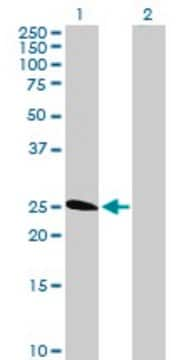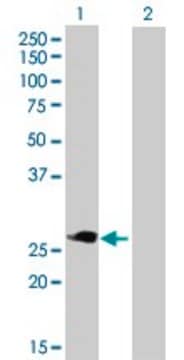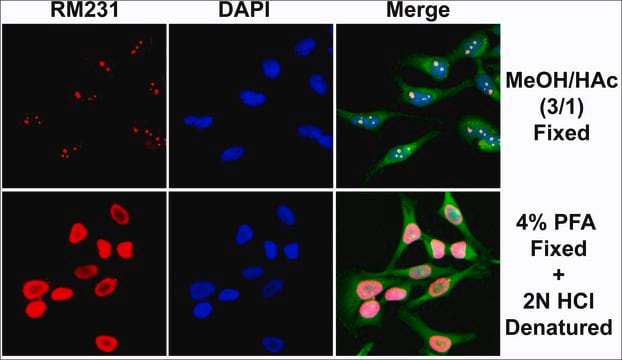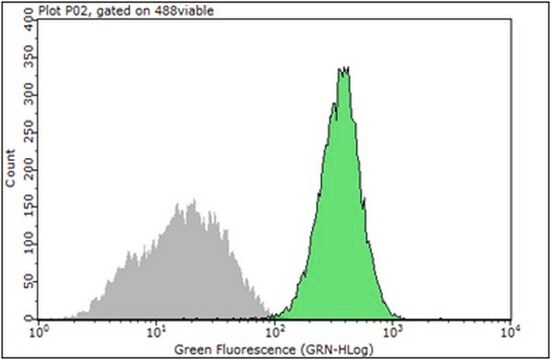MABF952
Anti-TNFRSF18 (soluble form) Antibody, clone T10P2H9*B9
clone T10P2H9*B9, from mouse
Synonym(s):
Tumor necrosis factor receptor superfamily member 18, Activation-inducible TNFR family receptor, Glucocorticoid-induced TNFR-related protein, GITR, CD357
About This Item
Recommended Products
biological source
mouse
Quality Level
antibody form
purified immunoglobulin
antibody product type
primary antibodies
clone
T10P2H9*B9, monoclonal
species reactivity
human
technique(s)
immunohistochemistry: suitable (paraffin)
western blot: suitable
isotype
IgG1κ
NCBI accession no.
UniProt accession no.
shipped in
ambient
target post-translational modification
unmodified
Gene Information
human ... TNFRSF18(8784)
General description
Specificity
Immunogen
Application
Immunohistochemistry Analysis: A 1:250 dilution from a representative lot detected TNFRSF18 (soluble form) in human breast cancer tissue.
Inflammation & Immunology
Quality
Western Blotting Analysis: A 1:250 dilution of this antibody detected TNFRSF18 (soluble form) in 50 µg of MCF-7 cell lysate.
Target description
Physical form
Storage and Stability
Other Notes
Disclaimer
Not finding the right product?
Try our Product Selector Tool.
Storage Class Code
12 - Non Combustible Liquids
WGK
WGK 1
Certificates of Analysis (COA)
Search for Certificates of Analysis (COA) by entering the products Lot/Batch Number. Lot and Batch Numbers can be found on a product’s label following the words ‘Lot’ or ‘Batch’.
Already Own This Product?
Find documentation for the products that you have recently purchased in the Document Library.
Our team of scientists has experience in all areas of research including Life Science, Material Science, Chemical Synthesis, Chromatography, Analytical and many others.
Contact Technical Service








